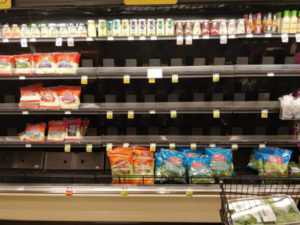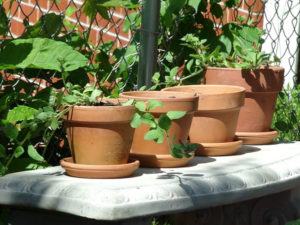Why is learning to be self-sufficient or for some God-dependable so important? Because of stuff like this, yet another recall. On Monday, the USDA Food Safety and Inspection department put out a health notice that made Kroger (which also owns Harris Teeter), Trader Joe’s, and Walgreens (who knew Walgreens sold salad?) pull some of their salads and wraps from the shelves due to the cyclospora parasite. If you have shopped in these places for these items, I highly suggest you read the article.
These stores are major players where I am. And Trader Joe’s is often thought of as a “safe” store to buy your organics from. Not saying that they aren’t – the very fact that they pulled items off their shelves shows their care for quality. But if these places are where you get your food from, you might have to start thinking yet again about what you can do at home. These places aren’t the only places that have had recalls recently. There have been several of them over the last few months and years. Shelves had to go bare for a while for the recall of romaine lettuces. And lettuce isn’t the only thing being recalled.

With all of this happening, you really have to ask yourself, “Can I do some of this myself? Is it worth it?” I say, in my opinion, YES! Growing your own food is definitely worth it. If you’ve read some of my past blogs, If You Have A Seed and Why We Are Choosing This And You Can Too!, you can see the why and how.
Seriously y’all. With little time and effort, you can grow your own food. This will be food that you don’t have to worry about recalls. You will know what’s going in your food and what you are putting into your body. So, what will you need?
- Terracotta pots. I like these more than plastic pots; they work well for moisture control. They don’t have to be expensive either.
- Good soil. Your basic soil that you find from hardware or big box stores will work. There should be ones specifically for growing fruit and veggies. Here is what we use.
- Seeds. Again, find them from your local stores. Big box, hardware, or gardening stores will have them. I prefer gardening stores since more than likely there will be people there to give you good advice on how to get the best results.
- Water. Goes without saying. Every living thing needs fresh water.

Be patient. - Sun. Some things can be grown inside in pots. Those things will likely have a small symbol on the packet or say it somewhere on the packet that it can be grown inside or in pots. Some, you must grow outside. Either way, make sure that your plant has access to sunlight. If you read the back of the packets, they will tell you if you need shade, partial sun, or full sun.
- Patience. Some things will take a while to grow. Some will grow quickly. Some things will only produce a little bit. Some will produce a great lot. The main thing is, you have to take up a lot of patience to see your results. Don’t get frustrated and quit.
Also, keep in mind, some foods can be grown right from scraps of vegetables you have laying around. Green onions are the easiest to grow as well as leeks. Ginger, garlic, and lettuces can be grown that way as well. Scour the internet to see if any veggies you have laying around can be regrown and how to do it.
The main point is, please, take a moment to figure out how you can feed yourself. The more food is mass produced, the more we will run into recalls. If you have food you have grown, you won’t have to worry about if what you bought was wasted money.
Take care!